Take Your Students to the Stars in the Target Language
By Shannon Schmoll, Caitlin Cornell, Lynn Wolff, Felix Kronenberg, and Shannon Donnally Quinn, Michigan State University
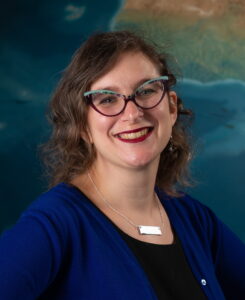
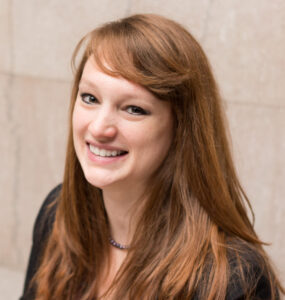



DOI: https://www.doi.org/10.69732/ITXB2277
Language teachers are always looking for new ways to engage their students using the target language. Planetariums are known for teaching about space and stars. But planetariums and language teachers can join forces and help students learn about space and stars while using the target language.
Background Logistics
Shannon Schmoll and Caitlin Cornell
The idea for this project started when Shannon S. first mentioned to me (Caitlin) in passing that the planetarium had access to star talks in multiple languages. I immediately thought of the rich authentic experience this could offer for foreign language students. I felt it was my role, and by extension the Center for Language Teaching Advancement’s, to facilitate this opportunity for foreign language instructors. Importantly, this budding partnership and its future development into a project fit nicely within our center’s mission and vision, namely transforming language teaching through connection and innovation. It became my intention for our language center to be the administrative bridge between the planetarium and language instructors, to share, streamline, centralize, and scaffold the project.
I started by drafting a landing page on our center’s website with a description of the overall possibilities for instructors and where to direct questions. Incorporating Shannon S.’s understanding of planetarium processes, I developed a Qualtrics survey as a star talk request form for instructors and linked the form to the landing page. The form included an email trigger, notifying both myself and Shannon S. when an inquiry was made. In the early days, Shannon S. responded to instructors’ requests with logistical information pertaining to the planetarium that only she could answer, and copied me so that I was kept apprised of the types of questions instructors were asking. While it made sense for Shannon S. to be the primary contact for instructors because only she is so well versed in what the planetarium could acquire in terms of foreign language star talks, I wanted to remain informed so that I could see what kinds of questions they were asking and what needs they presented. Understanding some of those questions and needs led me, for example, to establish the Frequently Asked Questions section of our landing page, cutting down on our administrative bandwidth. Our center also took on publicity for the project, sharing about the partnership on such platforms as our unit newsletter, departmental listservs, and social media pages.
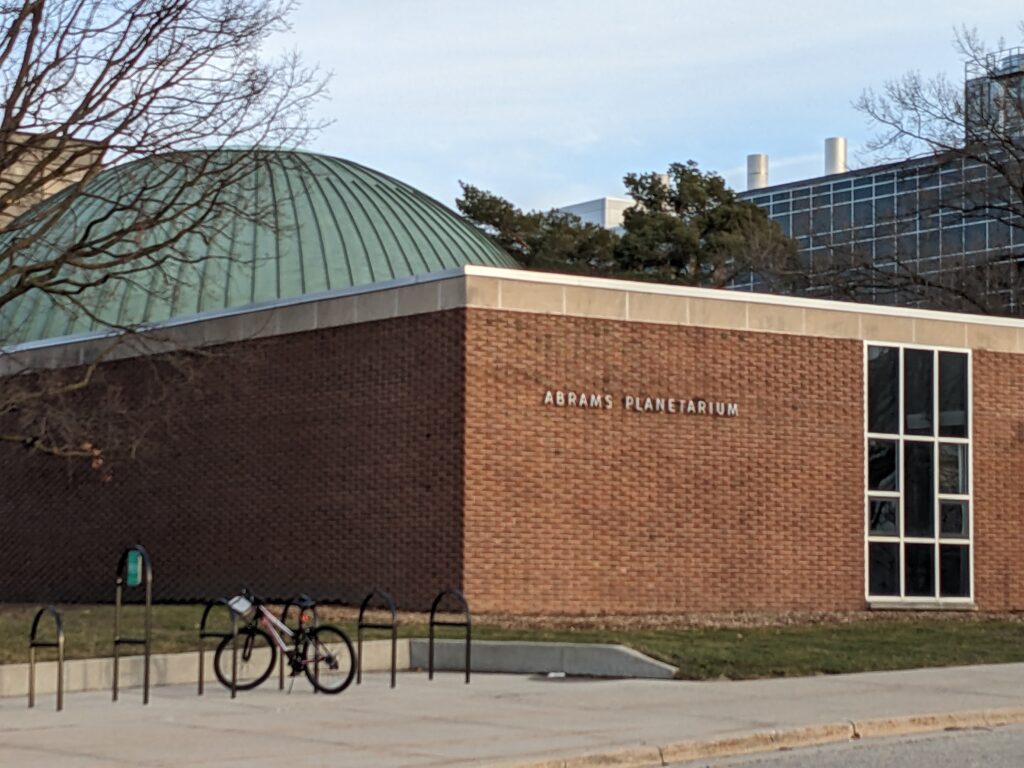
The process to offer planetarium shows in multiple languages is relatively simple for those with a digital planetarium like the Digistar planetarium system that the Abrams Planetarium uses. You can simply download or request the soundtrack and swap the English soundtrack for the target language. Resources like Fulldome Database also make it easy to look up what languages are available for most planetarium shows. Many of the shows from the European Southern Observatory, for instance, have been translated into multiple languages and they are all available for free. Some shows have a license fee that planetariums need to pay. The planetarium can reach out to the company they licensed the show from and request the soundtrack in a different language.
The Center for Language Teaching Advancement then put out a call for language teachers to consider scheduling a planetarium show in the target language for their students. Though not every language is represented in the freely available planetarium shows, you can find shows with audio in Arabic, Chinese (Cantonese), Chinese (Mandarin), Croatian, Czech, Dutch, German, Finnish, French, German, Greek, Hebrew, Hindi, Hungarian, Italian, Japanese, Korean, Lithuanian, Norwegian, Polish, Portuguese, Russian, Spanish, Swedish, Turkish, Telugu, and Thai.
Several language instructors decided to schedule planetarium shows for their students.
Reading Planetarium Images in German
Lynn Wolff
When I read about this opportunity in an email from CeLTA, I knew that I wanted to integrate a planetarium visit into my fourth-year German course. Both Caitlin and Shannon S. were very helpful in facilitating this, from providing the various show transcripts to describing the logistics of bringing a class to the planetarium. The general topic for the 400-level course is 20th– and 21st-century German literature, and instructors in our program are able to define a specific thematic focus. In my case, I designed a course on “Reading Images,” and in it, we explore different types of images and the central role of visual representations in German culture. We read a range of texts – poetry, short prose, a novella, and a graphic memoir – to discuss how authors use vivid descriptions to create ‘images’ with and through words. We also examine what it means to ‘read’ images – photographs, paintings, collages, and films. Our approach to understanding how texts and images communicate considers both production and reception. On the production side, we consider how images are made and how they are used to convince, deceive, entertain, and educate. On the reception side, we discuss the various ways we react to images, such as with delight, disgust, disinterest, and wonder. In short, this course examines both the role of human imagination and the power of images.
I chose the show “From Earth to the Universe,” because one of the narrative threads is how observations of the natural world led to developments in culture and technology. The show uses a variety of images, from drawings to photographs to data visualizations. The language of the show is also rich in metaphor and analogy, which are important literary techniques. A planetarium show, this one in particular, illustrates exciting ways STEM fields and the humanities inform each other and can create a productive dialogue.
Due to scheduling constraints, I had to plan the class visit to the Abrams Planetarium within the first week of the semester. Since the students in the class are approximately at the Intermediate-Mid to Intermediate-High level according to the ACTFL scale, I decided to forego a more formal introduction to the new topic (e.g., handouts with guiding questions and a list of new vocabulary). Instead, I framed the activity as an experiment. During the walk from the classroom to the planetarium, we had an informal discussion about the students’ past experiences – if they had ever been to a planetarium – and their expectations for the show. Once we were in the space, I invited them to sit back and relax, while I provided a brief verbal introduction to the show and raised a few questions to consider while watching and that we then discussed afterwards, including: What do you see, and what do you hear? What is the main story that the show tells? How is information communicated (in words, in images, and what types of images)? I firmly believe that this relaxed discussion both before and after the show helped establish the positive atmosphere and easygoing discussions we had throughout the entire semester. It was also my intention that this activity would model a way to approach the other texts we worked with, many of which are challenging both linguistically and narratively. Taking the students out of the normal classroom setting can give them confidence in their linguistic skills and cultural knowledge.
All in all, this was a fantastic opportunity to both introduce and delve into some of the key ideas of my course in a new way. In the simultaneous act of watching and listening to the planetarium show, students experienced the powerful interaction of text and image that we reflected on throughout the rest of the semester when analyzing both literature and film. Moreover, doing this in the target language of German gave everyone a sense of accomplishment.
Connecting STEM Topics and the German Language in the Planetarium
Felix Kronenberg
During the spring semester of 2023, the third-year German 302 course “Nature in Germany” visited the planetarium. The course deals with several topics that connect the STEM field with the humanities. One module of the course is about discoveries and exploration in nature. The planetarium visit, a new addition to this module, allowed students to view these narratives through a new lens. The class visit consisted of three parts: part one was the planetarium show in German, part two was a discussion in German that included observations, reactions, and comprehension questions, and part three consisted of a brief discussion with the director of the planetarium in English. The visit was part of a series of other on-campus excursions, which also included a trip to the campus science and history museum and a class in the campus botanical garden (which was canceled due to inclement weather). Student feedback was very positive.
While this first visit was exploratory, it will surely become a mainstay in the future. One outcome of this class is the plan to develop downloadable lesson plans that are specific to the different shows available in German. This kind of activity would be excellent for K-12 German classes, who could come to campus as part of an excursion and visit the planetarium.
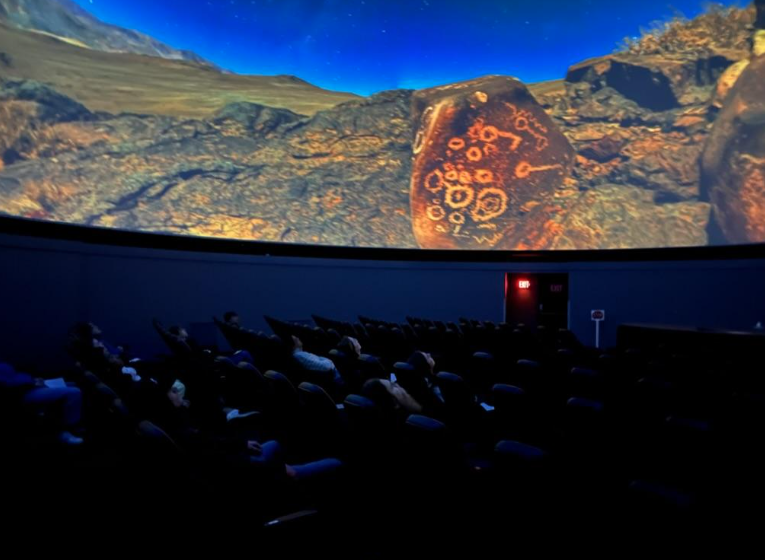
Building Target Language Community and Vocabulary through the Planetarium in Russian
Shannon Donnally Quinn
The Russian program decided to schedule a show at the time that the MSU Russian Club normally meets and make it a club event, as well as to invite students from all levels of the language courses. We worked with Shannon S., the planetarium director, to choose a general interest show that would feature non-technical vocabulary. It was extremely helpful that the director of the planetarium was able to provide a transcript with translation of the show that students would watch. To facilitate students’ understanding of the planetarium show, we provided them with this transcript/translation as well as a vocabulary list. Some of the Russian language classes also completed activities related to the vocabulary in the show. We also discussed the patriotic nature of the US/Russian space programs and how that influences the shows. In the future, we hope to feature a show that was filmed in Russia which will offer an interesting counterpoint to the American show. We were honored that the Director of the Abrams Planetarium speaks some Russian, and after the showing of the film, she introduced the names of some constellations to students in Russian.
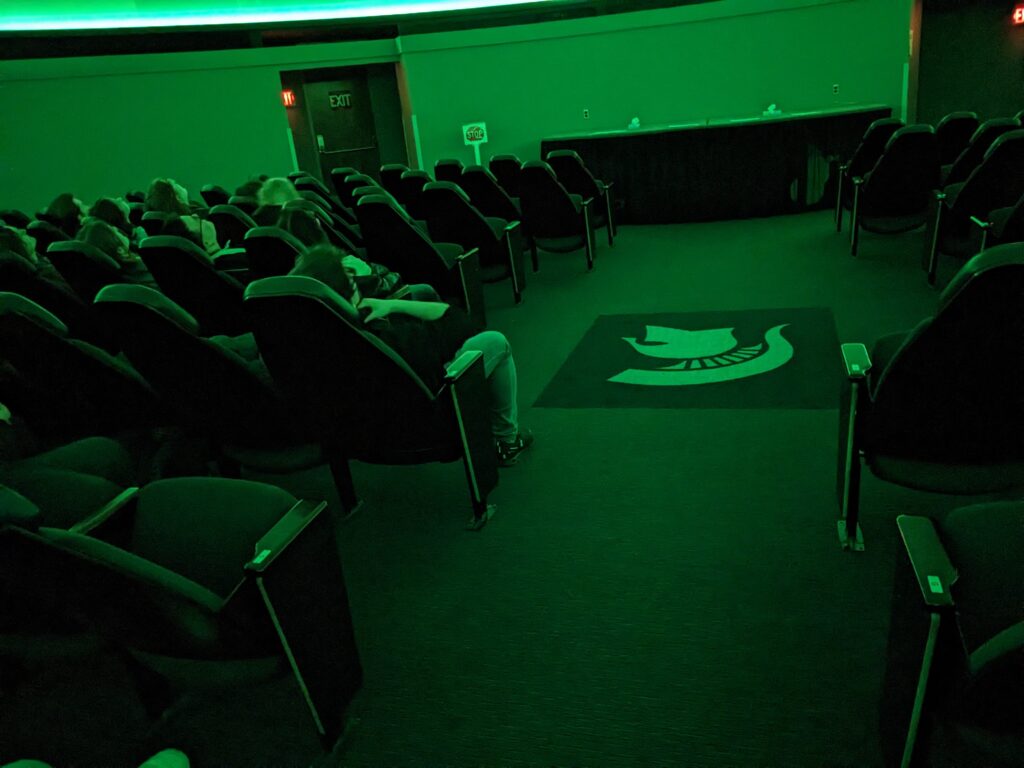
If your target language has a significant emigre community within your community, you may also want to make an effort to invite them to the planetarium event. It can facilitate connections between emigres and students learning the language, and can be a valued service from the university to the community. The Abrams Planetarium has often been used by groups in the Lansing area that are supporting refugees to create exposure to English and help people learn English in a safe environment.
These kinds of events can also serve as a bridge between world languages and STEM fields. They can be attractive to students majoring in science and connect the language to real-life topics. As more planetarium shows made within target cultures become available, it can also offer students a unique perspective of science, as well as serve as an additional fun and informative way to build community and engage with the target language.

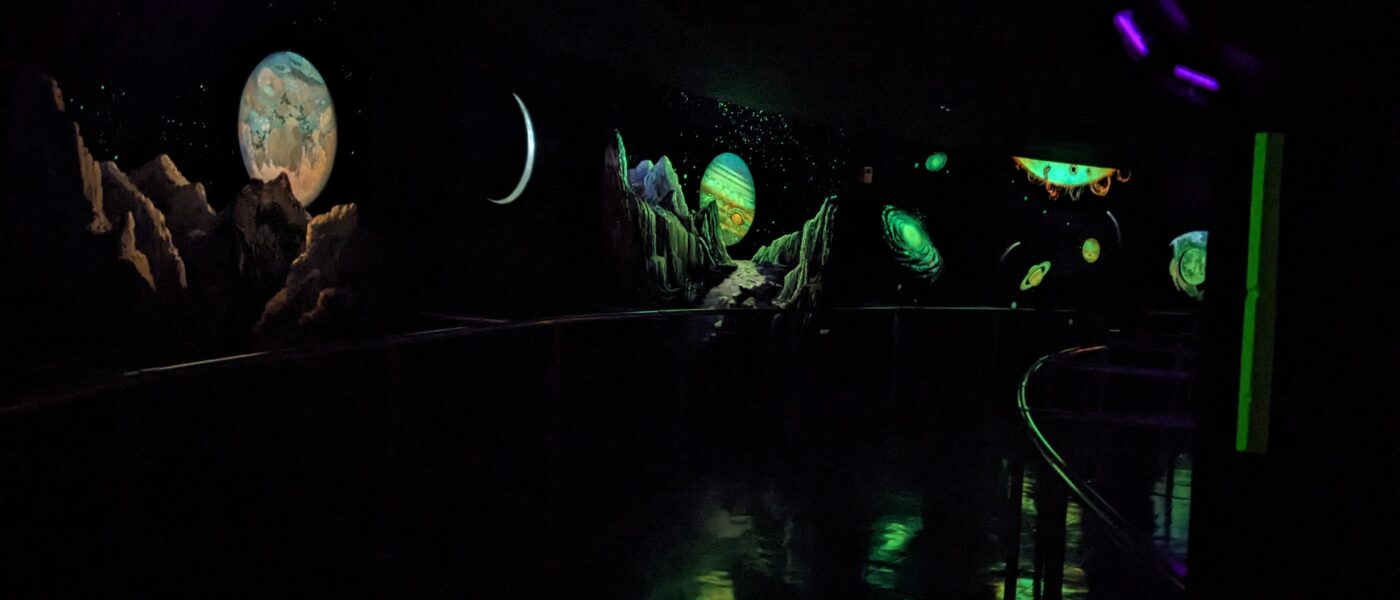
What an awesome idea! Are the Planetarium visits available virtually at all? If so, my univeristy in Virginia would be interested in a virtual visit, for sure!
I do certainly know that there are some planetarium shows in various languages available on YouTube, for example. I searched for “planetarium” in Russian and found a few. You might try that!